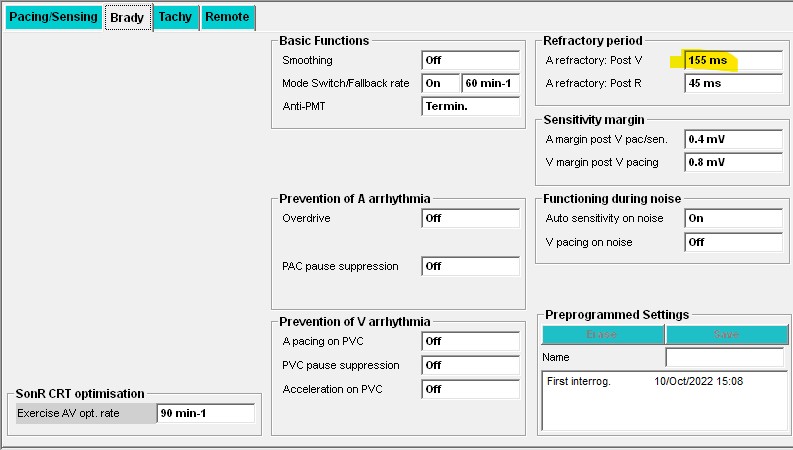AF alert (3)
Case Summary
0 of 1 Questions completed
Questions:
Information
You have already completed the case before. Hence you can not start it again.
Case is loading…
You must sign in or sign up to start the case.
You must first complete the following:
Results
Results
Time has elapsed
Categories
- Not categorized 0%
-
A closer look to the associated EGM clarifies the crosstalk. We see intermittent Ar events (within the WARAD) coinciding with paced ventricular events.
After 28 ventricular cycles in suspicion (out of a sliding window of 32), the device mode switches into DDI as is shown in the image below. The ventricular pacing rate is progressively slowed (fallback) until the ventriclar events become sensed.
As this case shows, in CRT patients with preserved AV conduction, inappropriate mode switching due to crosstalk, a drop in CRT may occur. The %CRT lost is in direct relation with the amount of crosstalk, as shown on the ventricular pacing curves below.
The atrial refractory period was extended from 80 ms to 155 ms which removes the fast atrial cycles and eliminates the suspicion of atrial arrhythmia.
A follow-up was performed a few months later which confirmed the effectiveness of the prolongation of the atrial refractory period post ventricular pacing. The mirror curves of %VP and “AF” confirm the etiology of drop in CRT, namely crosstalk.
- 1
- Current
- Review / Skip
- Answered
- Correct
- Incorrect
-
Question 1 of 1
1. Question
A 63-year old male with dilated cardiomyopathy and left bundle branch block has been implanted with a CRT-D (PLATINIUM CRT-D SonR) and comes for a device check-up, he is asymptomatic.
You see the following alert on the overview screen.
Suspecting that episodes of atrial fibrillation(AF) are responsible for the drop in %CRT, you open up the first episode and see the following tachogram.
What is the most probable etiology of the drop in %CRT?
CorrectIncorrect







